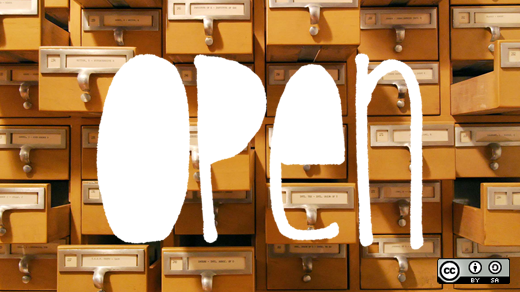The rising cost of college education threatens many potential students' ability to access higher education, but a growing group of professionals is trying to help defray costs by applying lessons from open source development to course material development. These open educational resource (OER) supporters are actively advocating for open pedagogy and creating openly licensed, high-quality textbooks.
This year, this movement received $8 million in funding from New York State to develop OERs to support the state’s Excelsior Scholarship program, which aims to make college education more affordable for New Yorkers.
According to Alexis Clifton, executive director of the State University of New York OER Services, which is co-leading New York's OER initiative with the City University of New York, OERs can break the well-known link between family income and the likelihood of attending college by removing two significant barriers. "One [barrier] is day-one access: not having to wait on financial aid to arrive before purchasing the required materials, which can often be two weeks or more into a semester. Everyone is on a level playing field with course materials from the very first day. The second is financial: not having to decide if buying the book is more important than spending money on other life necessities."
Although traditionally published textbooks remain the norm in higher education, interest in OERs is increasing. For one reason, textbook costs rose 82% from 2002 to 2012, according to the U.S. General Accountability Office. Another reason to look closely at OERs, says Clifton, is that "faculty and campuses using OERs are showcasing their own knowledge and talent. We are taking a revenue stream that pointed outside our system (by asking students to make very, very large investments into publishing corporations) and redirecting it to reinvest in ourselves."
An indirect pathway
Clifton didn't set out to become an educator, let alone an OER champion; in fact, her bachelor's and master's degrees are in creative writing. While in her master's program, she was awarded a graduate teaching fellowship and taught freshman composition courses. To keep up with the field's frequently changing primary sources, she needed to refresh her course materials at least once a year. That made it "easy for me to shift first to fully online course material, and then into openly licensed course material," she says.
Still, her background in creative writing is relevant to her current role. "I see teaching as a creative act, and course design is an art form as much as a tradecraft. It's not so much about tools and techniques as it is finding the best way to engage and share material with students," she says.
Her natural inclination as a "tinkerer and builder" also meshes nicely with the open source philosophy. "I like writing new assignments, getting input on them from my students, and improving them as a result," Clifton says. "I reshape text in my online courses frequently. Discovering Creative Commons licensing, realizing that I had the ability to take great materials others had already written, and adapting them to what I knew my students needed for a specific context was life-changing for me. My appreciation of the work others had openly licensed inspired me to share as much of my own content openly as possible, as well."Ways to expand OER adoption
Boosting OER in higher education will take input from several angles, Clifton suggests.
"Faculty talking to other faculty, especially in the same discipline, is such an effective method for increasing adoption of OER," she says. "Each discipline, each course, has particular challenges when it comes to using and sharing openly licensed content, and it's best to see models of how it has already been done in similar classes."
Academic leadership must play a role, as well. "It's also important to know that your administration supports this work and that it will be valued by students," she says.
Adding to the challenges and the opportunities, Clifton explains, "OER conversations bring people together that don't normally sit at the same tables: students, faculty, administration, bookstores, advising, registration, libraries, campus technology, and instructional design all have important roles to play as a campus makes a commitment to OER. They all have to talk and work together."
An 'addictive process'
The ability to build freely on other people's work with OERs can change the landscape of higher education. "The culture is shifting towards embracing tools that we can all make our own, on all parts of the campus," Clifton says. "We seem to be in the early stages of discovering what's possible with open education. Taking a text and altering it still feels a bit naughty to me—it goes against my scholarly training. I take comfort in the process of attribution, of giving credit both to the original author and to myself for adapting it. Once we all grow more comfortable with that, it will start to become an addictive process, and the demand for more raw material—more openly licensed content to work with—will be high."
Ultimately, Clifton says, "open pedagogy, in addition to the financial impacts of OER course materials, intentionally invites other voices into positions of authority in the classroom. It gives room for each student to take ownership of course content, and that's empowering."







3 Comments